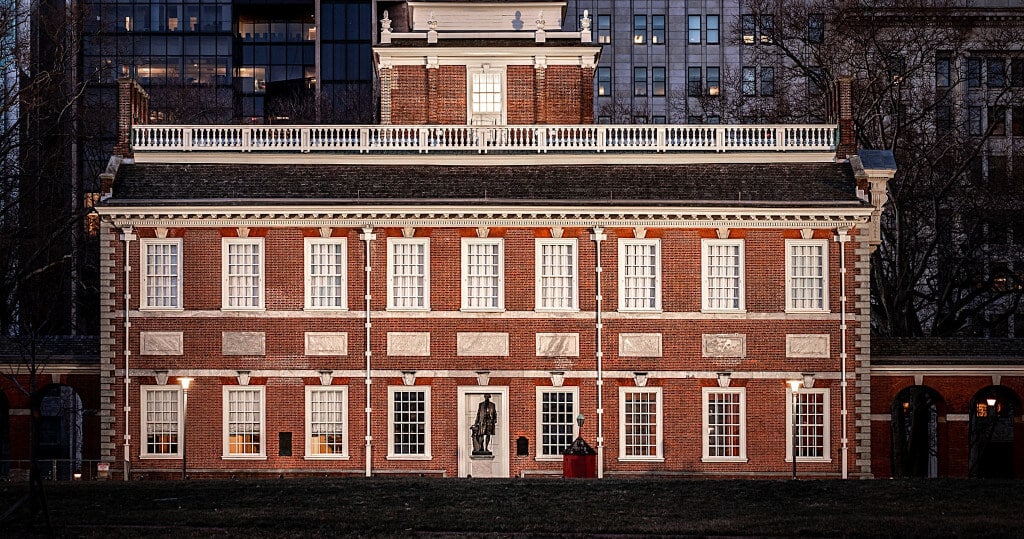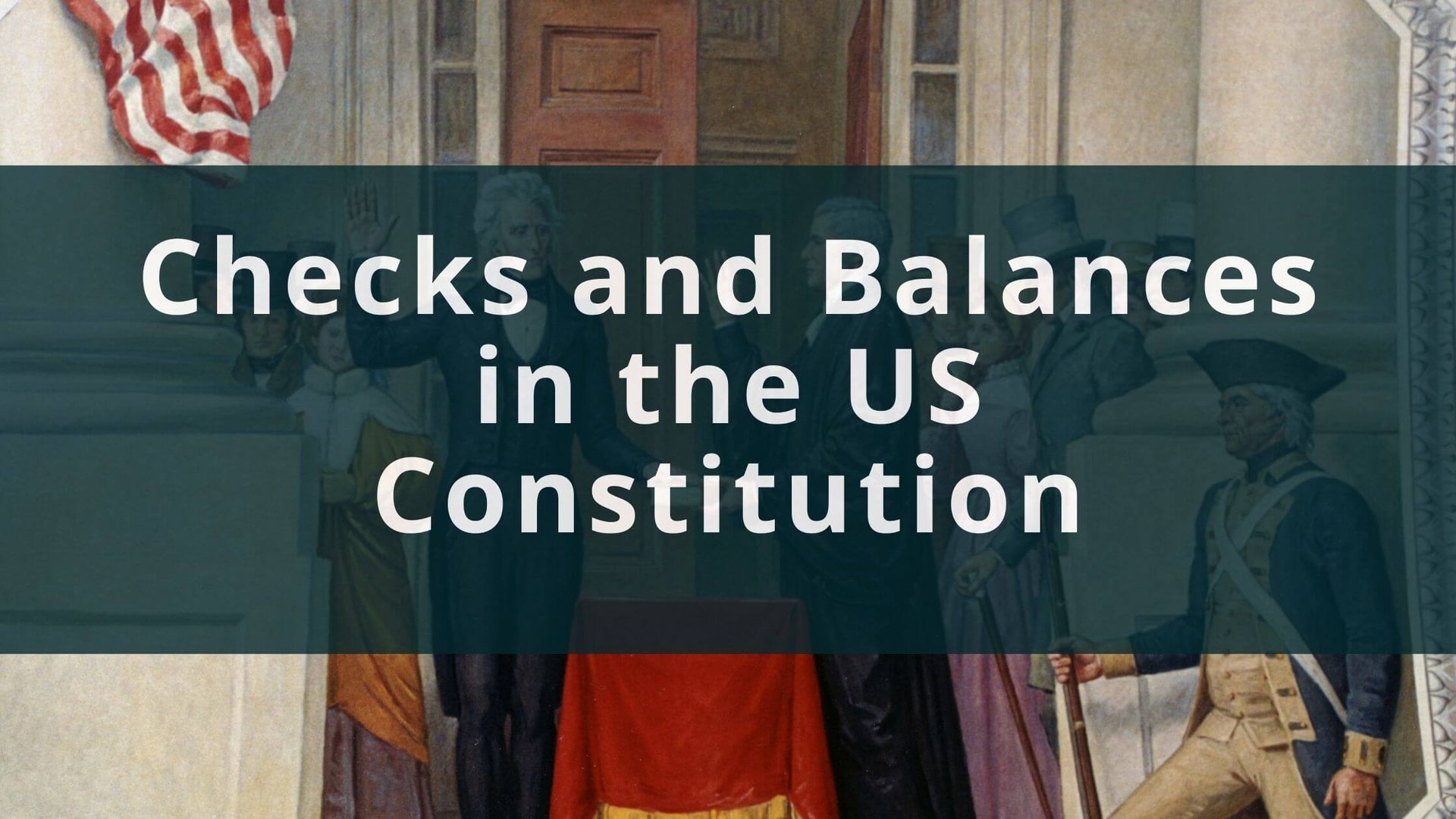The United States Constitution was written to protect citizens and also the states. It ensures rights, prevents the federal government from infringing on these rights, and creates laws.
The fundamental rights and civil liberties for individuals are set out in the constitution.
The Law of the Land
Often referred to as “The Law of the Land,” the United States Constitution prevents the government from infringing on the basic rights and civil liberties granted by federal law. However, this is not the only purpose and function of a constitution.

Principles of the Constitution
To understand the purpose and role of the American Constitution, it is essential to look at the principles and factors that guided the creation of the constitution by Founding Fathers like George Washington, James Madison, and Thomas Jefferson at the Constitutional Convention in the first place.
Often referred to in popular literature or scholarly textbooks as the “guiding principles,” these include rights of individuals, federalism, law and order, popular sovereignty, judicial independence, the rule of law, and check and balances, which is included with the separating of power of the branches of the federal government.
These principles were designed to protect the way of life and interests of the citizens of the United States and to define the powers and functions of the national government.

Articles of the Constitution
There are seven articles of the U.S. Constitution. Articles can best be defined as clauses or stipulations contained within a document.
Article I, Article II, and Article III relate to the Legislative Branch, Executive Branch, and Judicial Branch, respectively.
Those are followed by the process of creating States and Constitutional Amendments.
Debts, supremacy, and oaths are contained within Article VI, and lastly, ratification in Article VII.
These articles are the basis for the written constitution, initially drafted at Independence Hall in 1787 after America had won independence from Great Britain following the American Revolution.

Organization of Government
The constitution defines a framework for the federal government with rules and regulations that must be followed. As previously mentioned, this includes the legislative, executive, and judicial branches. In addition, it outlines the powers of these branches individually and combined, limiting unnecessary power.
Furthermore, it identifies and outlines that these branches of the national government are not to infringe upon individual and state rights. This is achieved by having legally binding processes that must be adhered to by the branches.
Duties and Limitations of the Constitution
In defining the federal government’s organization, the constitution also defines duties and limitations. Simply put, it sets forth laws the federal government must abide by.

It is a guide of what can be done by a government branch that holds offices within those three core branches.
Even the president himself must follow these laws and sets of rules.
This lends checks and balances so that one branch may not override aspects of constitutional law or abuse power.
Civil Liberties
Civil liberties afforded by the constitution include freedom of religion, freedom of speech, freedom of assembly, freedom of petition, and freedom of media access.
This prevents the government from infringing on and punishing unlawfully for any of these freedoms.
Another important reason for the separation of power is that this allows the people to question government practices and address them without punishment or retaliation from any branch of the central government.
Essentially, this is an important part of remaining a democratic nation. Democracy is heavily integrated throughout the document and serves as one of the primary purposes of a constitution.

Get Smarter on US News, History, and the Constitution
Join the thousands of fellow patriots who rely on our 5-minute newsletter to stay informed on the key events and trends that shaped our nation's past and continue to shape its present.
Rights of Individuals
The rights of individuals provided by the United States Constitution include the right to a public trial for a criminal offense, the right to possess firearms, question excessive bail or unusual punishment, and the right to question arrests and property seizures without a warrant.

These concepts cover things such as wrongful imprisonment. The purpose of individual rights is to prevent the central government from abuses of power and extend basic freedoms available to all the country’s citizens.
Bill of Rights
The Bill of Rights constitutes the first ten amendments and includes the above-mentioned civil liberties and the rights of individuals.
However, there are other provisions included within the Bill of Rights. This includes rights concerning the housing of soldiers (which was an issue during the American Revolution), civil courts, and undelegated powers of the government. Once again, this prevents the government from seeking punitive damages without due process, among many other things.
Amendments to the U.S. Constitution
Amendments have allowed for the adaptation of laws as American society has evolved. When the American Constitution was created, it was devised with this in mind. Hence, the amendment process is one of the articles included within the constitution.
That way, it could be a living, functioning document that fits the needs of Americans as times changed over the years.

For example, the Fourteenth Amendment stipulated that everyone born in the United States should be automatically granted citizenship, regardless of race. While the Nineteenth Amendment granted women the right to vote.
In American history, there have been 27 amendments to the constitution.
Citizenship and the Constitution
American constitutionalism is thorough regarding the rights of citizens and the law for the government. The constitution also addresses citizenship. Simply put, it addresses who is classified as a citizen of the United States and defines the pathways for those who may not be citizens but wish to become one.
It also lays out the duties and responsibilities expected of the citizens. These duties and responsibilities will apply whether one is naturalized or a citizen by birthright.
References to citizenship are found throughout the articles and amendments. The written constitution was devised with citizens and democracy in mind.
Why Is the Constitution Important?
So, why was the Constitution written? It should go without saying that the primary function and purpose of the Constitution is to serve and protect the people of the United States. However, it encompasses so much more than this.

It protects citizens from unlawful persecution. It also aids in preventing the kind of government tyranny experienced in early American history by Benjamin Franklin, John Adams, and Alexander Hamilton under the rule of Great Britain.
This seminal document does so by ensuring checks and balances within the federal government and clearly defines the laws set forth for the national government.
The Constitution covers individual and state rights and minimizes the unnecessary involvement of federal branches of government. In addition, the U.S. Constitution lays out the expectations for citizens and the requirements for gaining citizenship.
Watch the following video to find out why the Constitution was written:
Purpose of the US Constitution Quiz
If you would like to download a PDF with our quiz, then please go to:
Alternatively, you can take our online quiz here:




